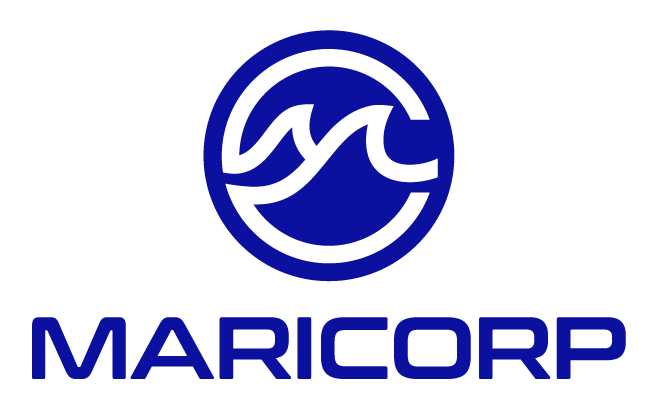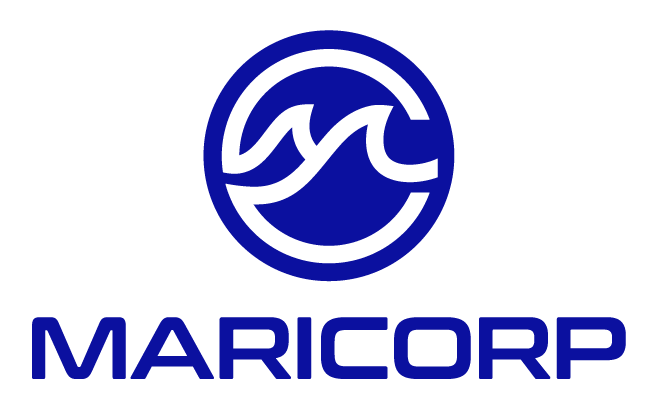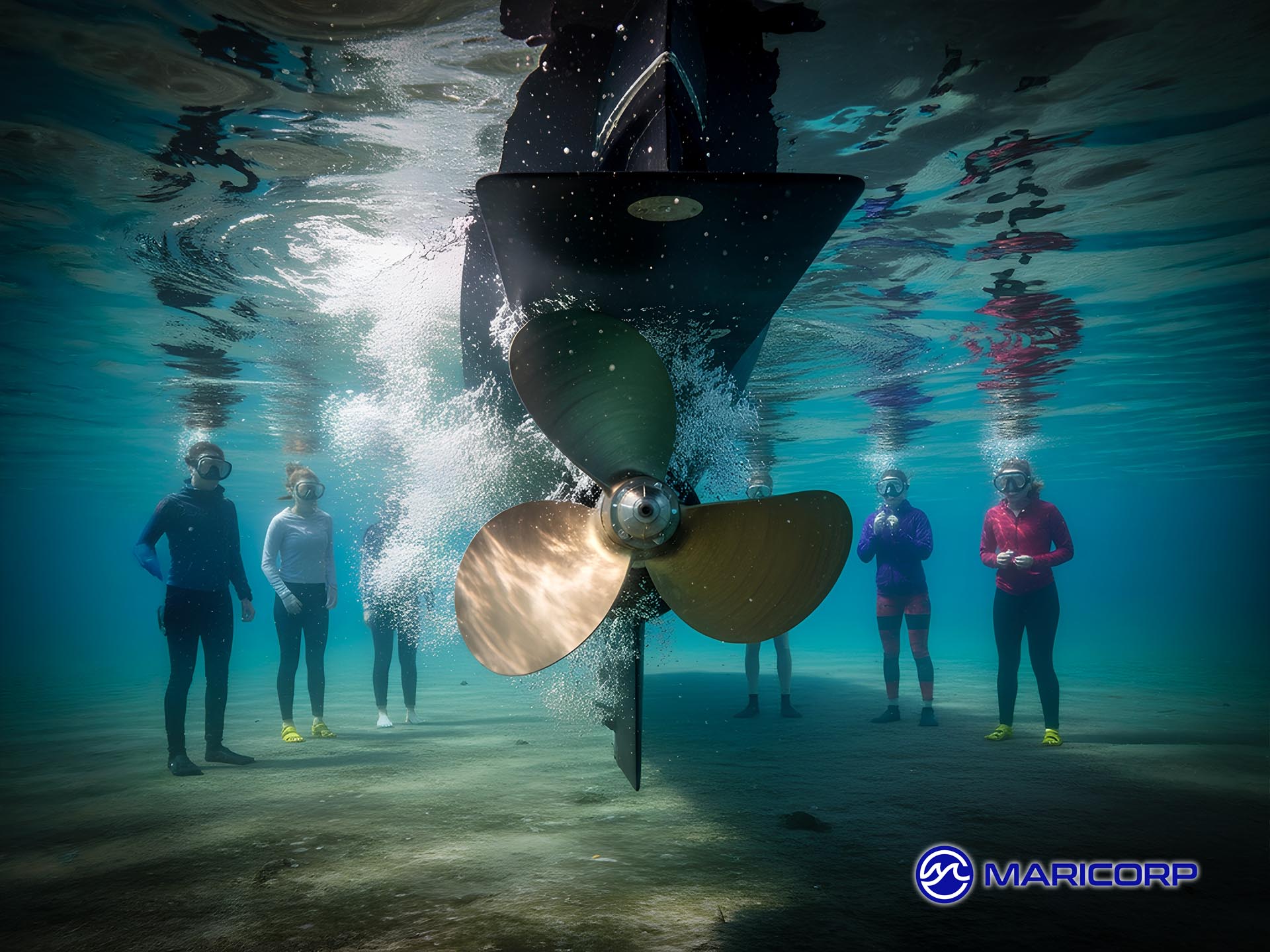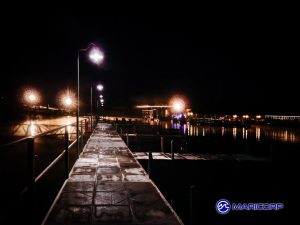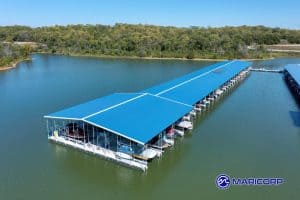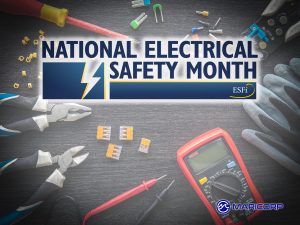Propeller Strike Prevention
A Guide for Marinas and Boaters
Propeller accidents on recreational boats are among the most tragic yet preventable incidents marinas encounter. The U.S. Coast Guard reports over a dozen fatal propeller strikes each year, with hundreds more requiring hospital care. These usually involve swimmers, people boarding or disembarking, or passengers falling unexpectedly overboard—making propeller strike prevention an operational necessity and a matter of protecting swimmers through consistent marina policy.
Understanding the danger of propellers begins with the physics: spinning blades pull objects inward, creating a suction effect that can trap limbs or pull bodies into the path of the props. Even a momentary lapse—such as starting the engine after someone enters the water—can lead to a life-changing injury. The often-repeated “Circle of Death” scenario occurs when an unmanned vessel circles back and hits the person it ejected. Awareness of these mechanisms helps marinas craft proactive communication tools aimed at boosting propeller strike prevention.
Reinforcing on-water safety habits
Boat operators should follow essential practices every time someone enters or exits the boat:
- Shut down the engine before boarding or swimming. A training guide from Boat Ed strongly emphasizes: engines should never be running near swimmers.
- Mandate seating while underway. Standing near the stern, bow, or gunwale increases risk. Enforcing a rule that everyone remain seated unless preparing to dock protects both passengers and the larger operation by reinforcing behavior that contributes to propeller strike prevention.
- Equip vessels with engine cut-off switches. Federal regulations require these on many boats. Using a lanyard or ECOS clip ensures engines shut off if the operator falls overboard—a fail-safe that saves lives.
- Use a trained spotter during swimming or boarding. A live lookout, focused on the water near the stern, greatly enhances safety. Promoting this practice supports your mission of protecting swimmers and fosters shared responsibility.
- Observe no-swim zones and diver flags. Boaters need reminders that swim areas and diver zones marked by flags are off-limits to moving boats. These zones are designed to reduce risk by separating manned vessels from swimmers.
Training for the crew and staff
Marina personnel play a critical role in preventing accidents. Training should include:
- Spotting unsafe behavior such as engine idling during boarding or passengers boarding while the engine runs.
- Interventions: a dockworker should be empowered to speak up when actions threaten swimmer safety.
- Safety briefings: Require renters and day-use guests to sign off on basic safety checks—cut-off switch functionality, life jacket availability, and the presence of a swim watch.
- Emergency drills: Simulate accidents—someone in the water near operating props—and verify staff respond quickly, notify authorities, and implement rescue plans effectively.
When marinas run such programs routinely, propeller strike prevention becomes part of daily culture, not just policy.
Implementing equipment-based safeguards
Beyond habits and training, marinas can recommend or provide hardware that enhances safe operations:
- Propeller guards encase blades, offering protection without compromising performance. These can reduce injury severity in near-miss scenarios.
- Swimmer detection alarms trigger alerts or deactivate engines when someone enters the water near an active boat.
- Wireless cut-off devices, such as wristbands or electronic tags, provide additional safety redundancy, especially for complex helms or trainer vessel usage.
Combined with operator awareness, these tools form an accessible safety net supporting propeller strike prevention and reinforcing efforts to safeguard swimmers.
Prioritizing high-risk vessel categories
Data shows propeller strikes are most common on:
- Open motorboats, especially rental units used by novices
- Personal watercraft (PWCs) like jet skis, where speed and turbulence elevate risk
- Small cabin cruisers, where passengers move about freely
Marinas should tailor messaging and training efforts to these vessels, offering cut-off lanyards at checkout, posting prominent signage, and actively supervising launch and landing areas.
Communicating through signage
Strategically placed signs can reduce dangerous behaviors:
- At launch ramps: “Engine Off Until All Aboard—Protect Our Swimmers”
- Along swim platforms: “Watch for Boats—Stay Seated Until Engine Off”
- In rental check-in areas: “Lanyards Save Lives—Please Use”
Signage serves as a constant visual reminder that supports your propeller strike prevention action plan.
Engaging customers through education
Effective education helps make safety a shared priority:
- Distribute safety checklists from the BoatUS Foundation
- Offer float plan templates from the U.S. Coast Guard
- Include safety tips in newsletters or social media, reinforcing protecting swimmers as a feature of community care
- Host demo days showcasing ECOS usage, guard installation, or emergency shut-off tools
These outreach efforts reinforce that safety is part of the overall boating experience at your marina.
Maximizing staff preparedness
A well-prepared team responds faster and more effectively:
- Assign clear duties during busy launch hours—ramp supervisor, safety observer, emergency response liaison.
- Conduct pre-season briefings highlighting local hazards, weekend traffic predictions, or recent near-miss trends.
- Use two-way radios or alert apps so dockworkers can communicate issues immediately.
- Review fleet insurance and liability policies to ensure coverage aligns with your safety initiatives.
A confident team with clear protocols is essential for sustained propeller strike prevention.
Navigating emergencies with clarity
Swift and structured response is critical in emergencies:
- Trigger engine shut-off on any vessel involved
- Send staff immediately to assist any injured swimmer
- Call 911 or the Coast Guard on VHF Channel 16
- Secure the area to prevent further accidents
- Gather statements and take photos—essential for reporting and learning
With protocols rehearsed and roles defined, marinas are better equipped to handle crises with composure.
Cultivating a respectful safety culture
Consistent enforcement fosters respect—customers expect clear rules for their own protection. Host regular safety mornings, spotlight compliance in newsletters, and share stories of lives saved through quick action and system use. This ongoing engagement supports long-term commitments to propeller strike prevention and protecting swimmers.
The broader impact of safety prioritization
Marinas known for safety attract rentals, alarm insurance underwriters, and inspire community trust. Families feel welcome, boaters stay longer, and staff morale improves. While propeller strike prevention directly prevents harm, it also enhances overall growth, retention, and environmental reputation—critical success factors over time.
Implementing a comprehensive propeller strike prevention plan transforms your facility from a hazard zone into a safety-minded harbor. It reduces liability, strengthens guest confidence, and places protecting swimmers at the heart of every dock turn.
Additional Articles:
- Wear Your Life Jacket To Work Day 2025
- National Safe Boating Week 2025
- What I Learned Hosting Marina Days
- National Maritime Day 2025
- Celebrate “Kids to Parks Day” 2025
About MariCorp
Maricorp is one of the largest floating boat dock manufacturing and construction companies in the United States, specializing in galvanized steel floating docks and boat lift systems. With projects spanning coast-to-coast, Maricorp provides marina consultation and design, marine construction, marina repair and renovation, and boat dock disaster response and demolition.
